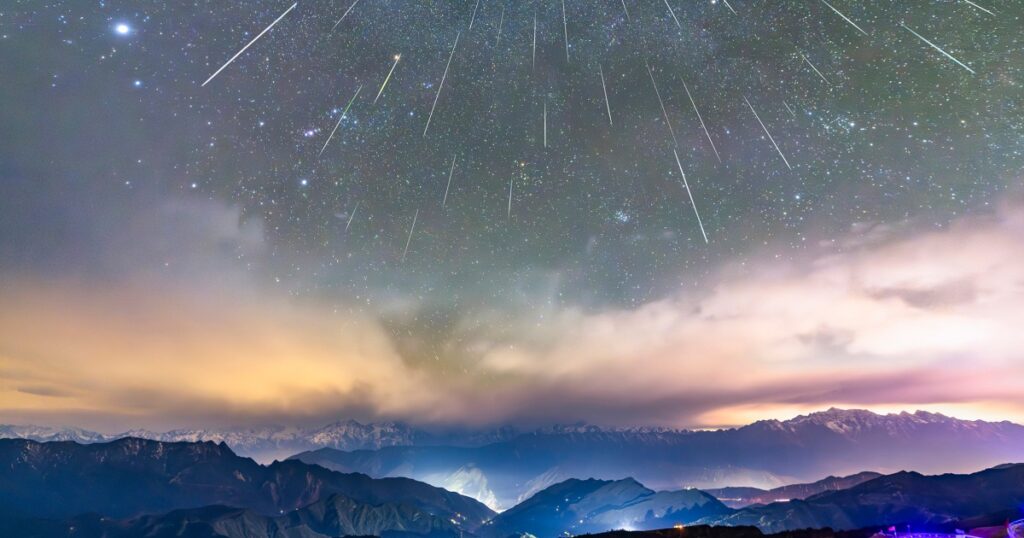The Summary
- The annual Geminid meteor shower is set to peak overnight Friday and early Saturday.
- The meteor shower is typically one of the best and most reliable of the year.
- Stargazers can also look for Jupiter and a formation of three bright stars known as the Winter Triangle.
Stargazers may be in for a treat this weekend, as the annual Geminid meteor shower is set to peak overnight Friday and into the early hours of Saturday.
The meteor shower has been going on all month, but shooting stars are expected to ramp up heading into the weekend, particularly after midnight Friday and in the stretch of darkness before dawn, according to NASA.
The Geminids are visible in the Northern and Southern hemispheres, though a nearly full moon could wash out some fainter shooting stars in this year’s show.
Still, the Geminid meteor shower is typically one of the best and most reliable of the year, so skywatchers could spot some bright ones streaking across the night sky if conditions are clear.
Under ideal skywatching conditions — without bright moonlight and with little light pollution to interfere — as many as 120 Geminids per hour can be seen.

As their name suggests, Geminid meteors appear to stream from the Gemini constellation, but skywatchers should be able to see shooting stars without gazing directly at the constellation.
Experts at NASA suggest lying on your back with your feet pointed south to enjoy the Geminids. It’s best to choose a viewing spot that is dark, away from city lights and other forms of light pollution.
Unlike most other meteor showers, which are caused by bits of debris from comets that burn up in Earth’s atmosphere, the Geminids are remnants of an asteroid known as 3200 Phaethon.
Those planning to check out the meteor shower this weekend can also look for Jupiter, which will be visible in the night sky. The planet can be found between the nearly full moon and a reddish-orange star called Aldebaran, which shines brightest in the Taurus constellation and can be seen with the naked eye.
All winter, meanwhile, skywatchers in the Northern Hemisphere will also have the opportunity to spot the Winter Triangle, a formation of three bright stars. Made up of Sirius in the constellation Canis Major, Procyon in the constellation Canis Minor and Betelgeuse in the constellation Orion, this celestial triangle often features prominently in the winter sky.
To see the Winter Triangle, first look for the three stars that make up the signature belt in the constellation Orion. Slightly lower and to the left of the belt will be Sirius, the brightest star in the night sky. From there, Procyon will be slightly higher and to the left. Betelgeuse will visible by gazing back toward Orion, with the star appearing reddish at the constellation’s shoulder.













